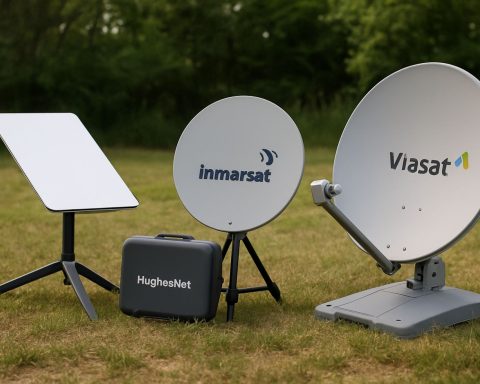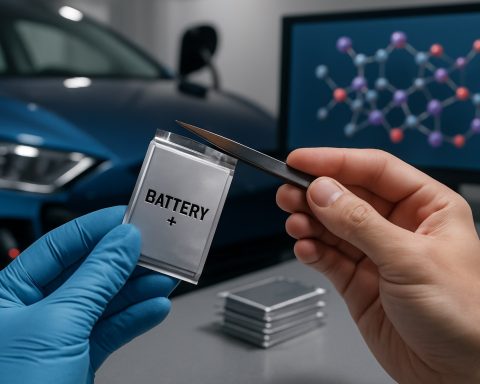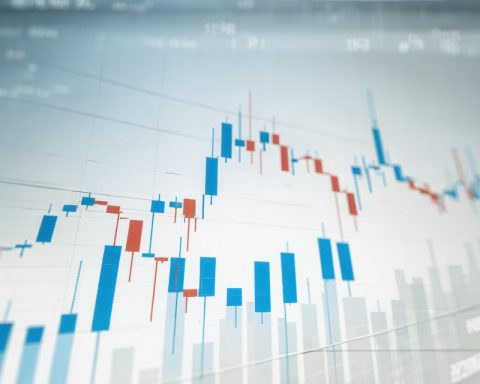- The EV battery recycling market is set to skyrocket from $9.1 billion in 2023 to $72.84 billion by 2032, with a 26% compound annual growth rate.
- This growth is driven by increased EV adoption, which heightens demand for scarce materials like lithium and cobalt.
- Government incentives worldwide are promoting the shift to electric vehicles and supporting sustainable recycling practices.
- Innovative recycling methods, such as hydrometallurgical and mechanical recycling techniques, are critical in recovering essential battery materials.
- Key industry players like Umicore, Li-Cycle Corp., and Shenzhen Highpower are leading advancements in battery recycling technology and capacity.
- The market faces challenges including intense competition, regulatory changes, and complex logistics, yet continues to grow.
- Consumers are integral to fostering a circular economy by supporting and adopting sustainable technologies and practices.
Beneath the glossy allure of electric vehicles (EVs), an extraordinary transformation is unfolding in their wake. This evolution is not just about the sleek, zero-emissions rides that have captured the world’s attention but also about an unexpected hero steering quietly into the spotlight: the EV battery recycling market. The numbers paint an undeniable trajectory—poised to catapult from a robust $9.1 billion in 2023 to a staggering $72.84 billion by 2032, demonstrating an impressive 26% compound annual growth rate over the coming years.
As more drivers make the shift to electric vehicles, seeking to outpace rising fuel costs and tap into increasingly favorable loan conditions, the lifeblood these cars depend on—their batteries—is finding new life in the burgeoning recycling industry. This shift is driven by more than sheer volume. It represents a strategic response to the scarcity and high demand for battery materials like lithium and cobalt, which are critical to continuing the electrification trend.
Globally, governments are progressively greening their policies, committing billions to incentives aimed at electrifying transport. These regulations are forging a cleaner future, incentivizing consumers not only to adopt EVs but to embrace benefits like direct purchase rebates and tax breaks. However, this revolution demands more than just a pivot from fossil fuels—it requires a sustainable, circular process for raw materials at the heart of battery manufacturing.
Diverse recycling methods, including hydrometallurgical processes that recover metals using aqueous solutions, and less intensive mechanical recycling techniques, play pivotal roles in ensuring that critical materials are reused rather than discarded. The industry’s leaders—Umicore in Belgium, Li-Cycle Corp. in Canada, and China’s Shenzhen Highpower, among others—are pioneering breakthroughs in these technologies, blazing trails both in capacity and innovation.
The sheer breadth of these efforts crosses continents, with significant market contributions from the U.S., Europe, and escalating involvement from Asia-Pacific giants. Key players fuel this market with savvy investments and strategic partnerships, cementing a commitment to sustainability while unlocking economic potential in unused resources. These initiatives not only mitigate environmental impacts but also position these companies at the forefront of a clean energy revolution.
Yet the path forward is not devoid of challenges—the intense competition, rapidly evolving regulations, and the intricate logistics of recycling within a global supply chain pose undeniable hurdles. Despite these obstacles, the momentum of vehicular electrification and its symbiotic relationship with battery recycling underscores a pivotal message: sustainable innovation is not merely the future—it’s the present unfolding, one recycled battery at a time.
For consumers, the takeaway is clear—there’s an opportunity to be part of not just a greener world, but one that’s economically sustainable and resonant with the technological strides of our era. As they drive into this new horizon, every charge also becomes a step toward a truly circular economy, where new life is breathed into old power.
The Hidden Goldmine: Why EV Battery Recycling is the Future of Sustainable Energy
Introduction
Electric vehicles (EVs) have become a symbol of technological advancement and environmental responsibility, but beneath their sleek exteriors lies a complex network of innovations poised to redefine the future—the EV battery recycling market. This burgeoning sector is expected to skyrocket from $9.1 billion in 2023 to $72.84 billion by 2032, growing at an astounding 26% compound annual growth rate. But what makes this industry so crucial, and how can consumers, investors, and policymakers tap into its potential?
Understanding the EV Battery Recycling Market
Industry Trends and Market Forecasts
The shift toward electric vehicles is not merely a response to environmental regulations and consumer demand for sustainable transport. It is a necessity driven by the scarcity of essential materials like lithium and cobalt. The recycling market is rapidly evolving with contributions from major players around the globe, including Umicore, Li-Cycle Corp., and Shenzhen Highpower. As regulations tighten and demand for EVs surges, new opportunities arise within this critical industry.
How Battery Recycling Works
The industry leverages advanced recycling methods, primarily:
– Hydrometallurgical Processes: Use aqueous solutions to extract metals efficiently, minimizing energy consumption and environmental impact.
– Mechanical Recycling Techniques: Focus on physical means of breaking down batteries to reclaim valuable materials without intense chemical processes.
These methods not only ensure the recovery of crucial materials but also reduce the need for new mining operations, aligning with global sustainability goals.
Market Players and Innovations
Leading Companies
– Umicore (Belgium): Renowned for its state-of-the-art recycling technologies and focus on sustainable solutions.
– Li-Cycle Corp. (Canada): Pioneering efficient recovery methods and metal reuse.
– Shenzhen Highpower (China): A key player enhancing recycling capacities and process innovations.
Challenges in the Recycling Market
While the potential is immense, challenges such as evolving regulations and complex logistics demand careful navigation. This includes:
– Intense Competition: With numerous players entering the market, staying ahead requires constant innovation.
– Regulatory Hurdles: Adapting processes to comply with varied international standards demands agility.
– Logistical Intricacies: Managing supply chains for a global industry poses significant challenges.
Consumer and Environmental Benefits
Real-World Use Cases
For consumers, engaging with the EV battery recycling market means contributing to a sustainable future while enjoying economic benefits. Here’s how:
– Reduced EV Costs: As recycled materials lower production costs, consumers can expect more affordable EVs.
– Environmental Impact: Recycling significantly reduces the carbon footprint compared to new battery production.
– Economic Sustainability: Recycling provides a local supply of raw materials, reducing dependence on volatile global markets.
Government Incentives
Governments worldwide are supporting this transition with incentives like purchase rebates and tax breaks, reinforcing the financial and environmental rewards of switching to electric vehicles.
Actionable Recommendations
1. Stay Informed: Follow the latest trends and adaptations within the recycling industry to make informed decisions.
2. Choose EVs Mindfully: Opt for models touted for their sustainable design and recycling potential.
3. Advocate and Participate: Support policies and initiatives that encourage recycling and sustainable practices.
Conclusion
The EV battery recycling market is not only integral to the future of transportation but also essential for a sustainable and economically viable world. By understanding and participating in this innovative sector, stakeholders can contribute to an evolving narrative where technology, sustainability, and economics meet.
For more about trends in EV technology, visit the Tesla website.










